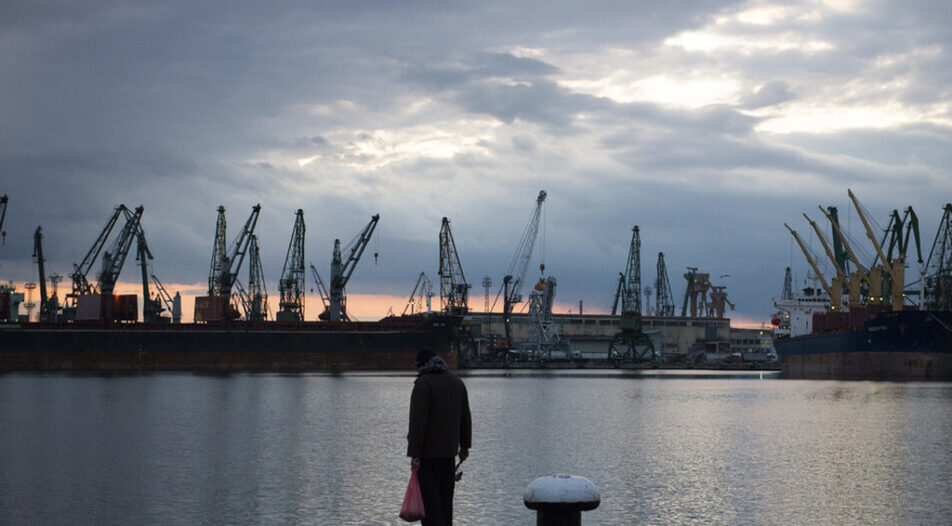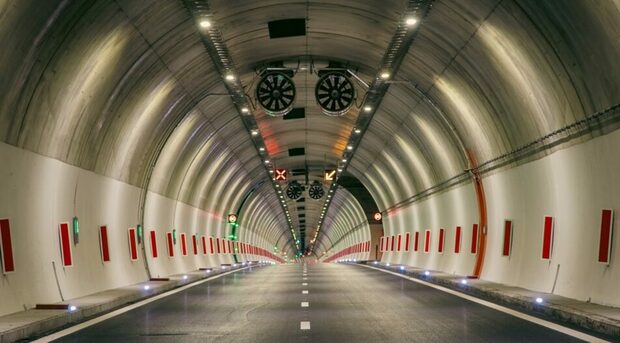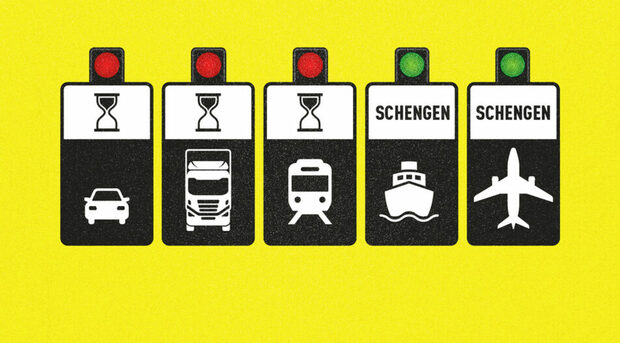- The volume of cargo transported from China through Central Asia to Europe is growing
- The pandemic and the war in Ukraine have made the corridor more important and promising
- Bulgaria lies on the route but needs to do more to attract transit traffic
On the evening of May 27, a freight train with 54 containers carrying auto parts, textiles and other products from China arrived at the port of Baku, Azerbaijan. It was transported by two ferries from port of Kuryk, Kazakhstan across the Caspian Sea. The unloading of the containers and their placement on railway cars took less than 2 hours, Azeri port authorities said. Then the train goes to the largest sea port in Georgia, Poti, from where the freight has to be loaded again on a ship and then sent to the Romanian Black Sea port of Constanta. After that, containers leave for their final destination, Finland.
It's pretty fast and quite different from typical practice. Chinese cargo usually arrives in Europe in two ways - by ship to major ports from the south or by train from the north through Russia and Belarus. However, the pandemic destroyed predictability in ship deliveries, and the Western sanctions over the war in Ukraine blocked transit shipments in Russian railways.
That's how slowly, but visibly, part of this flow of goods between Asia and Europe began to be transferred to the so-called middle corridor (Trans-Caspian International Transport Route) - through Central Asia and Southeast Europe.
The middle corridor's growing importance
Containers on this route increased by 28% in the first quarter of 2022 compared to the same period of last year, according to Ady Container, a subsidiary of Azerbaijan Railways. In an interview with online platform Rail Freight, company director Natig Jafarov said the increase did not yet include orders for goods that began arriving after the start of the war in Ukraine.
"However, 30 per cent growth is the actual growth and does not include prospective China-Europe transportation volumes, orders for which are coming in due to changes in the geopolitical situation. We received transportation orders for 1,000 trains this year, and we expect threefold or even more growth by the end of this year compared to 2021," Jafarov said. The road through Russia is now apparently losing traffic because the United States and the European Union have sanctioned Russian Railways.
According to Chris Devonshire-Ellis, founder of China-based consulting group Dezan Shira, transit through Iran increased by 52% in March 2022 alone. "We expect this to become a sustainable trend because suppliers have realized that chains need to have backup options," he told Capital Weekly. He also added that the Bulgarian port of Varna and the Romanian port of Constanta, both located on the Black Sea coast would be big winners of the situation (read the interview with Chris Devonshire-Ellis in the box below).
Still, this is a very small part of the total trade between China and Europe - only 4% of cargo arrived by train in 2021, according to consulting firm Bain & Co. The reason is that sea transport is almost twice as cheap. The chaos wrought by the pandemic, when ports closed, ships jammed and the supply chain collapsed, shifted the focus to rail transport, according to an analysis by DHL. In 2020, for example, there was a 50% increase in freight traffic from Asia to Europe.
The Bulgarian connection
The so-called "New Silk Road'' has been a major topic in recent years and China is investing a lot of money in infrastructure. As China has been far behind in logistics chains so far, large volumes of cargo have not passed through the country, and its capacity needs to be increased, according to Rail Freight. However, China works hard to fix this and different foreign players are getting involved.
As seen on the map, part of the chain should pass through Bulgaria. The railway line Baku - Tbilisi - Kars connects with Turkey, continues across the Bosphorus and reaches the Kapikule - Kapitan Andreevo crossing at the Turkish-Bulgarian border. From the border it enters the EU on a modernized, yet single-track railway line to reach Plovdiv, where Bulgaria's only intermodal terminal operated by local transport company PIMK is located.
The data show that the pandemic year 2020 was good for rail transport in the country - Bulgaria is one of only five EU member states in which freight train transport has increased significantly. 2020 was the year with the highest number of freight trains crossing Bulgaria since 2008.
It can't be said whether this growth continued in 2021 as no data is available yet. But a report from the port of Varna says that by the beginning of May 2022 alone, the port handled almost 40% more cargo than in the same period last year. This is probably related to incoming cargo from the north, which could not be processed in the closed Ukrainian ports.
Varna has been competing for years with the larger and more modern Romanian port of Constanta, which is connected to a high-speed rail. Contracts for the new corridor have been already signed and consolidate the main freight flow through Romania. According to Lubomir Garchev, manager of freight carriers DB Schenker Rail, there is surely an increase in transit traffic. However, Garchev says, 'Bulgaria is sleeping' when it comes to railway transport. Now, it seems the right moment to wake up has come.
- Is there an increase of cargo through Caspian and Black Sea ports which are not Russian? Do you notice an overall avoidance of Russian territory?
There has been an avoidance of transit cargo via Russia to and from Europe as sanctions have effectively closed ports. Cargo to Russia from Asia has also decreased in Q1 2022 as supply chains have been disrupted, including issues such as a lack of available containers. We expect the Asia to Russia supply chains to rebound by Q3 this year and possibly increase year-on-year.There is now an increase of cargo shipping instead via the Caspian routes, and this can be expected to further increase. Iran's transit trade increased by 52% in March.
- What does that mean for ports like Varna? What would we see in the coming weeks and months?
Ports such as Varna and Romania's Constanta can be expected to be significant beneficiaries of this trade, as they are the largest EU ports now accessible to the Caspian Sea routes from Asia. There are still some bottleneck issues to be resolved, rail transit from Baku to Black Sea ports at Batumi and Hopa needs to be improved, while the trans-Iranian railway from Chabahar on the Persian Gulf to Anzali on the Caspian will not be completed until 2023. This gives ports such as Varna some breathing space to obtain expansion investment into infrastructure and ensure sustainable logistics such as container availability and warehousing. Smart Port infrastructure will be key to Varna and other ports adapting to take advantage of this unique opportunity. But it's not just about the Ports. Supply chain infrastructure needs upgrading on all routes from Varna and Constanta to provide effective pan-European connectivity and distribution.- Do you believe that if such a shift is happening, it is to be a permanent one, or it will divert after the war?
I think it is a permanent, sustainable trend. This is because global manufacturers and their customers have realized that supply chains need to be backed up; last year for example the Suez was blocked for several months. Whatever happens elsewhere, even if sanctions on Russia are lifted, the Caspian supply chains will remain in favour. Besides, the route when fully operational is less expensive and more time-effective than the Suez route from Asia to Europe.- What's the overall implication of this for Russia-China relations?
Russia and China are jointly involved in upgrading Iranian infrastructure, with projects involving airport and rail infrastructure improvements. So they are working together to improve Caspian logistics. Russia's trade with the EU will take years to recover. This means that Russia's multilateral trade focus is now mainly on Asia and of course, this is positive trade news for all countries with Caspian borders and beyond.
- The volume of cargo transported from China through Central Asia to Europe is growing
- The pandemic and the war in Ukraine have made the corridor more important and promising
- Bulgaria lies on the route but needs to do more to attract transit traffic
On the evening of May 27, a freight train with 54 containers carrying auto parts, textiles and other products from China arrived at the port of Baku, Azerbaijan. It was transported by two ferries from port of Kuryk, Kazakhstan across the Caspian Sea. The unloading of the containers and their placement on railway cars took less than 2 hours, Azeri port authorities said. Then the train goes to the largest sea port in Georgia, Poti, from where the freight has to be loaded again on a ship and then sent to the Romanian Black Sea port of Constanta. After that, containers leave for their final destination, Finland.












